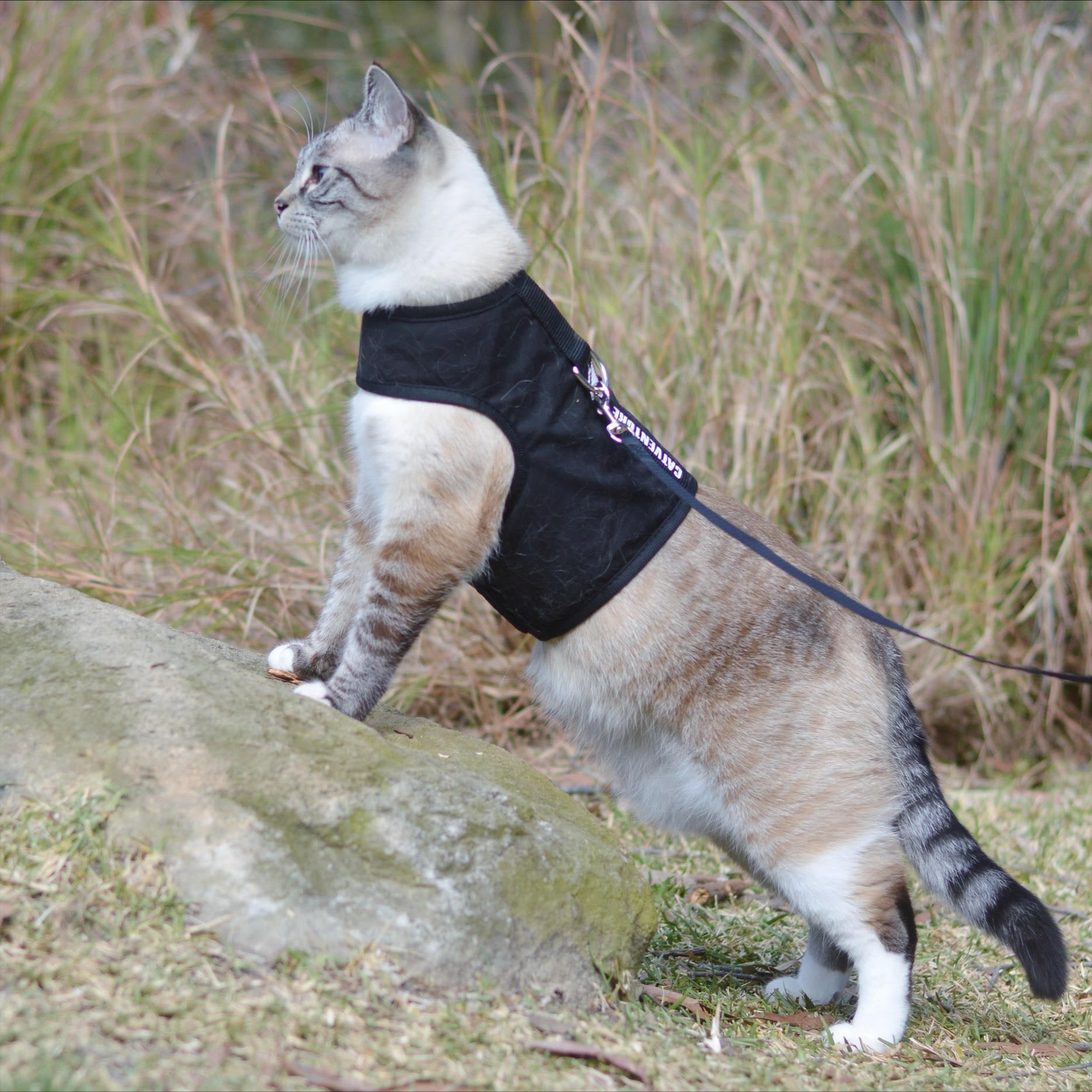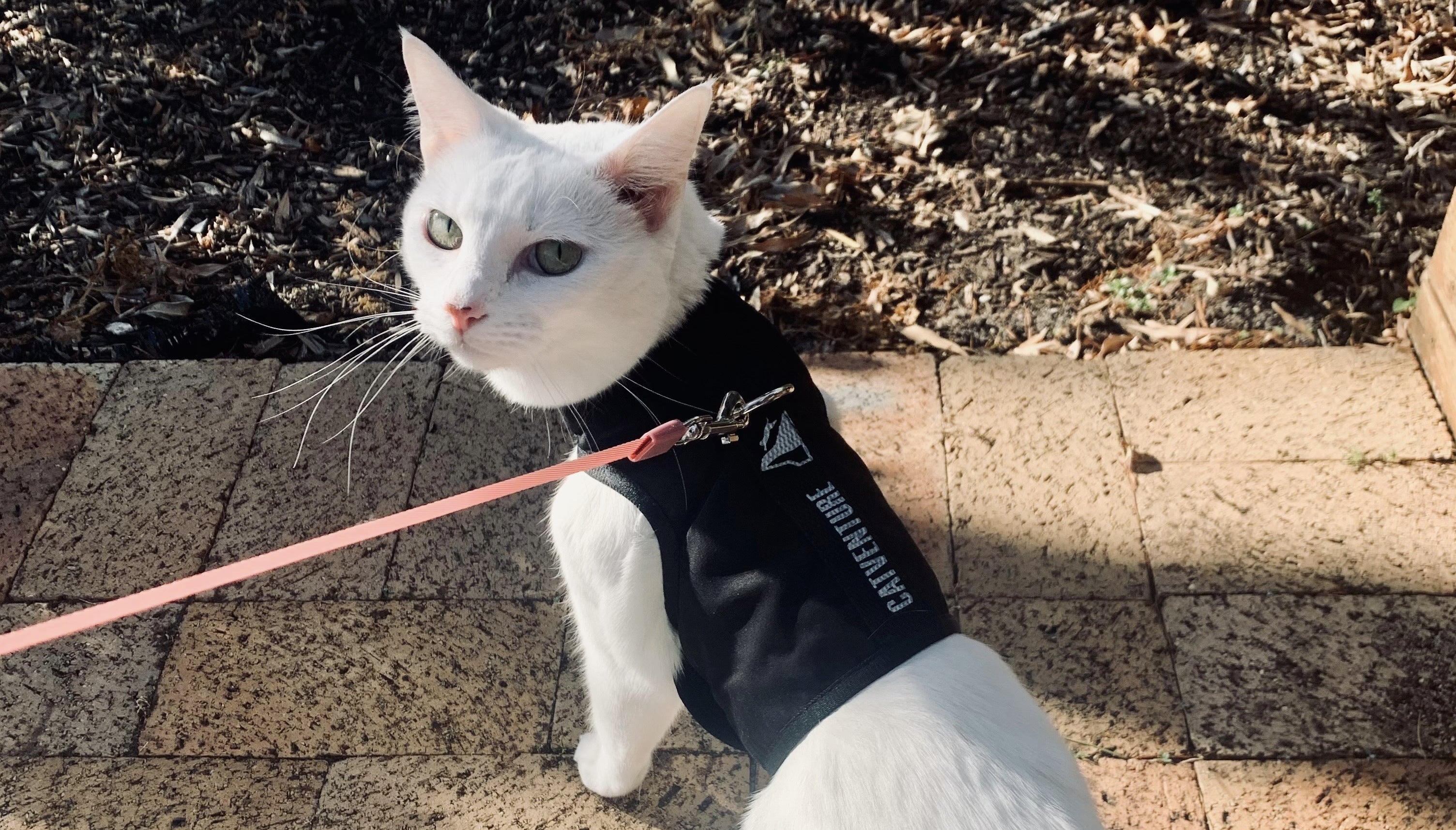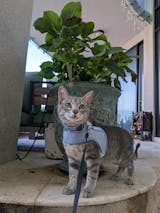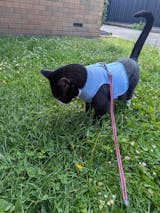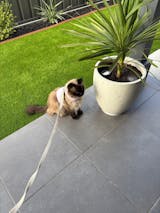Not many people would know that walking your indoor pet cats in a cat harness is crucial for their health and wellbeing. But what else do we need to consider to ensure our outdoor adventures are fun for everyone, especially our furry friends?
Hot pavements
This is a really important reminder, especially with the heatwaves Australia has been copping in recent summers. During hot weather and humid days, try and walk your pet during the cooler parts of the day – early mornings and evenings. This will prevent any heat exhaustion.
Cats' paws are quite sensitive, especially to heat, so they can easily burn their little toe beans/paws on hot pavement or asphalt. Avoid walking on hot sand, concrete, asphalt areas or any other areas where heat is reflected and there is no access to shade.
One way to test if the ground is a safe temperature for cats is to use to Five Second Rule. Place the back of your hand on the surface for five seconds and if it’s too hot for you, then it’s too hot for your cat!
Take the lead!
Having your cat walk on a leash when going for a walk is all part of being a responsible pet owner.
Retractable leads can be a great tool if you are constantly watching your cat, otherwise if you divert your attention even for a second while your cat happens to run, it could lead them onto the road or up a very tall tree which could be dangerous or even deadly.
We would suggest a cat leash of approximately 1.5m to 1.8m long would be a safe enough length to allow your cat to explore at a safe distance.
When you’re out and about your cat will naturally want to pull to explore their environment but do not pull back, jerk the lead or yell ‘No’ – stand still like a tree if they pull and reward them when they return to walk beside you and the lead 'loosens'. This way they associate a 'loose' lead with rewards and pulling with no reward. Keep offering a reward for them to be beside you and they will soon learn that this is a good place to be.
Never tether your cat to your bike or car. In some states such as NSW and South Australia, the RTA road rules state that a bicycle rider must not lead an animal, including by tethering, while the vehicle is moving.
Find out more about how to train cat to use leash at top tips for teaching your cat to walk with a harness and leash.
How to cool down a hot cat
It is important to brush your cat regularly, this makes sure they do not have too much excess fur in the warmer months. After a big walk outside, if your cat is a bit warm, try giving them a pat with a cool damp cloth. We all know how much they love pats. Also, make sure your cat is hydrated, leave a few fresh bowls of water around the house, with a couple of ice cubes in them. If your cat doesn't drink much water, try mixing some in with their dry food to encourage it.
FREEEEEEEEDOM
Allowing your cat to be off-lead in a safe enclosed environment such as a catio is a great idea. They can run freely and can regulate their own pace and the amount of exercise they want to do because when they get tired, they can choose to sit or lie down and rest before getting up again. Off-leash exercise is a great addition to your daily walk if done in a safe and controlled environment such as a catio. Be sure within your catio that you provide sufficient access to food, water and shade. Make sure to check out our blog on certain plants to keep them away from when outside here.
Poo bags
This is just common decency. No one ever likes standing in it, so if your cat poops – pick it up (even if they bury it)! Not only is in not pleasant for others, it is also detrimental to the natural environment. Cat excrement can deposit infectious diseases, such as the toxoplasmosis protozoa. These organisms are different from bacteria and viruses, but they can still make you sick. It's possible to catch roundworms if you touch your mouth to contaminated soil, according to Washington State University Extension.
Unfortunately, Australian marsupials are very susceptible to toxoplasmosis. Species such as the eastern barred bandicoot typically die within 2-3 weeks of infection. As a result, toxoplasmosis has thwarted conservation attempts to introduce the species to French Island in Victoria.
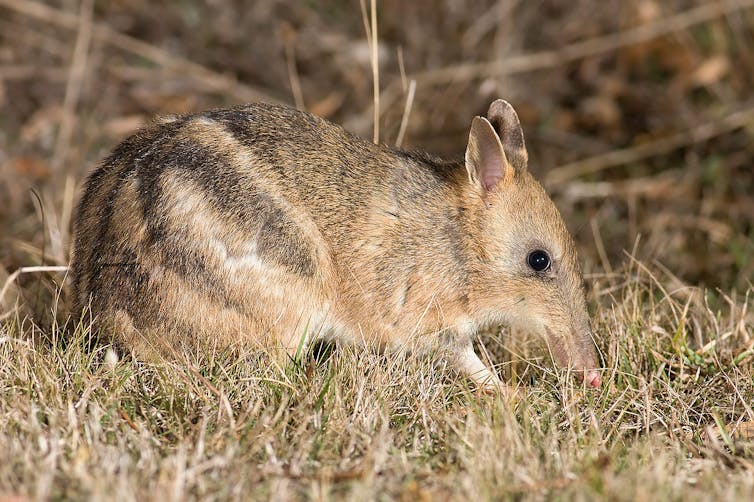 Infection in eastern barred bandicoots is almost always fatal. JJ Harrison/Wikimedia Commons
Infection in eastern barred bandicoots is almost always fatal. JJ Harrison/Wikimedia Commons
But bandicoots are not the only victims. Toxoplasmosis is a confirmed killer of other Australian wildlife, including Tammar wallabies, koalas, wombats, and several small dasyurids.
In Tasmania, toxoplasmosis kills Bennett’s wallabies and pademelons, with infected animals found dead or stumbling around blindly during the day, vulnerable to predators or cars as they stumble onto busy roads.
There is more research you can read on this topic on this link, however your cat's poo can affect the likes of other wildlife and is an eco-disruptor.








